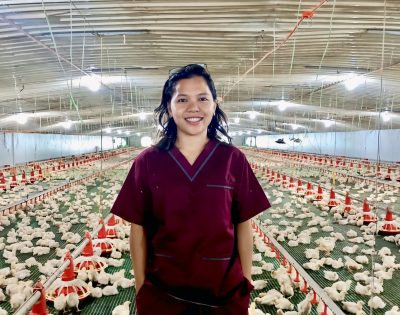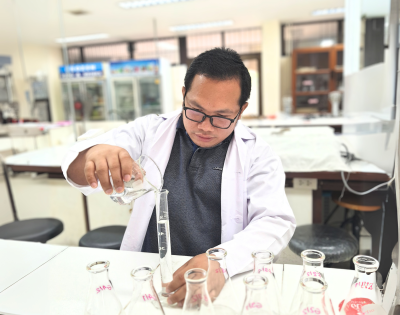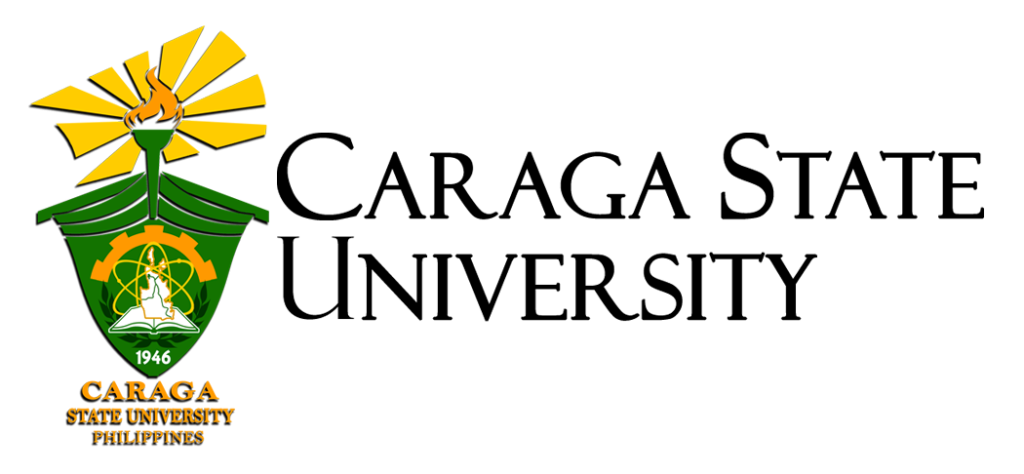Shaped by CSU: Forestry board topnotchers on college, teaching, and CSU’s influence

It requires determination to top the licensure exam, courage to rank 1st, and grit to do it back-to-back for two years. It is rare but possible, as exemplified by Golden Paddlers Cornelio Casilac, Jr. and Victor Corbita, ranking 1st in the 2016 and 2017 Foresters Licensure Examinations (FLE).
Seven years after their milestones, both are employed at Caraga State University – College of Forestry and Environmental Science (COFES). Early in their career, they earned their way to Instructor III rank, with Casilac also designated Chair of the Forestry Program and Corbita as Head of the Forestry Department.
When asked how they did it, both acknowledged the quality of instruction and the experience the university is known for, which shaped them the moment they enrolled at CSU. Importantly, they developed persistence throughout college, proving helpful as they progress in their careers. Here is a piece of their story.
Honed from renowned ‘college of topnotchers’
Casilac and Corbita are graduates of the defunct College of Agricultural Sciences and Natural Resources (CASNR), now separated as the College of Forestry and Environmental Science (CoFES). The college offers undergraduate programs in Forestry, Agroforestry, and Environmental Science and a graduate program in Environmental Management. Since 2011, the forestry program has produced 28 topnotchers in the FLE, with seven (7) in 2017, the year with the most topnotchers in CSU history (Top 1, 3, 4, 5, 7 (2), and 9).
Corbita describes the Forestry Program of CSU as ‘competitive.’ The college has a distinguished roster of instructors and professors – some graduated with latin honors and licensure topnotchers. This is advantageous because they can “relay pointers to students in preparation for the boards, such as which terminologies, formulas, and areas to familiarize with.”
Among the interventions initiated by the college was an FLE review conducted by lecturers from Mindanao State University-Main Campus. However, this initiative was discontinued during the pandemic. In 2024, it introduced a review led by the faculty members every Wednesday to help condition the upcoming takers. Third-year students will also take the Forestry Competency Assessment for the first time this year, a course integrated into the new curriculum, to assess their knowledge about the field and see which areas to focus on.
But more than the quality training ground that propelled the two to the top, they persisted in studying hard because “there is no other way around it.”
Prepared for the boards
“Siguro para sa akoa gyud to. [Maybe it was really for me],”
Forester Casilac humbly remarked when asked about topping the boards. His words stemmed from reflection, acknowledging the extensive preparations he had undertaken. He enrolled in the same review conducted by the MSU-Main Campus at CSU for a month and continued on his own for two months. He recalled diligently studying from 6 in the morning up to midnight with only short breaks and naps.
“I focused on my review as though something was pushing me. My father would be shocked to discover I was still studying upon returning home from work. I did not get tired at that time. If I forgot a term or an idea, I would not delay re-learning it.”
That ‘something‘ that drove him to be consistent in his review was the aspiration for “a more comfortable life after passing the licensure and securing a stable job.” He recalled praying and manifesting about landing Top 1 in the licensure even at the most random time and activity of the day.
“I aimed for it. I often repeat to myself that I would get that Top 1, which also conditioned my mind. This manifestation carried on wherever — even while accompanying my father in his trucking job or cleaning the tires of the ten-wheeler truck we rode together.”
This determination was also influenced by the college’s past performance in the FLE. A year before Casilac took the licensure exam, another Golden Paddler, who he shared some courses with and is a good friend, placed 2nd in the FLE. He was inspired by it and thought, “what if mag Top 1 ko noh? [what if I land Top 1?].”
One year later, Corbita traced the footsteps of Casilac. He was also moved by the 2016 FLE results, which produced four (4) topnotchers (Top 1, 3, 5, and 9). “We were inspired by the previous batch and wanted to build on their legacy. So, we studied hard and prepared for it. I aimed for Top 10,” shared Corbita.
He acknowledges the ‘healthy competition’ culture fostered by CoFES, remembering some instructors habitually posting topnotchers during long examinations. “We were conditioned by it. It challenged us to do our best.” True enough, the 2017 FLE saw seven topnotchers from the university, which has not been beaten yet in CSU history.
They recall the warm reception from the college for their achievements, especially the former dean of the college Dr. Gerardo O. Kitche, who is also regarded as the father of the Forestry Program in the college for laying the groundwork for its establishment.
On top of the external reception, they were happy to attain more than they imagined. “I was very happy because I never imagined I would reach that high. I remember having a hard time with Forest Engineering and Utilization, the most difficult subject for me, and counting only 46 sure answers. I thought I would not make it,” shared Casilac.
“We are not well off, but my parents managed to send us to school,” said Corbita. “I did not want to waste their efforts. That is why I was so happy that I made them proud.”
Shaped by CSU
Casilac and Corbita chose to study at CSU because it offers quality education within the region. Casilac first enrolled in an engineering program in 2010, took a break in 2011, and returned in 2012 to pursue Forestry, favoring it for its affordable unit fee. Meanwhile, Corbita’s first choice was Biology, but went with Physics because the former already met its quota. He later shifted to Forestry in 2014, mainly influenced by boardmates in the same program.
“Lisod gyud siya [It is truly difficult],” Casilac recounted his journey at the university, highlighting the hard time he experienced dealing with mathematics in his first year. But “this is one of the strengths of the university, with quality instruction and competitive faculty lineup. You will struggle, but you will also learn a lot,” he added.
Casilac, on his end, also shared that “if you are a CSU graduate, you are knowledgeable wherever you end up. Instruction alone is high quality. If you fail, you fail. You will not graduate if you learn nothing.”
While he missed some classes because he also kept a part-time job for extra income, Casilac made sure to catch up on his courses.
“It is difficult to balance work and the demands of college. But dropping out was never my option. My parents would often remind us to endure despite the challenges. I did not have the highest grades, but I made it.”
Now, as full-time instructors, the two believe that the university is becoming more competitive because of the support for faculty development and research. Early in their career, the two were encouraged to pursue graduate studies to advance their knowledge in the field and qualify as full-time instructors.
Both secured scholarships from the Commission on Higher Education and pursued a Master of Science in Forestry. Casilac went to Central Mindanao University (CMU) and graduated in 2022, while Corbita studied at the University of the Philippines Los Baños (UPLB), experienced the coronavirus pandemic away from home in 2020, and finished in 2021.
Casilac added that CSU’s support for research endeavors is also manifested in how faculty are incentivized during the Program on Awards and Incentives for Service Excellence (PRAISE). For every publication, a faculty member receives monetary incentives. “This motivates us to do better because we are recognized as active contributors to the publication targets of the university.”
Found passion in teaching
Both Casilac and Corbita intended to pursue careers outside CSU. However, the licensure examination results somehow led them to the academe with former professors’ advice. Now, the two find the academe rich with opportunities for professional growth. “If you are passionate about teaching, you have a place in the academe. If you are interested in research, you also have a career here.”
“I have developed an appreciation for teaching even if I did not plan to be here. I find satisfaction in sharing what I know that can help the students in their future careers. There are tips and strategies on how to pass the board exam, protect and conserve nature, measure tree height, and compute the volume of trees. We also share practical insights on conducting diversity assessment and inventory of species. ” shared Casilac.
Although hesitant at first, Corbita considers teaching a passion as influenced by relatives who are also teaching.
“As an instructor, I believe that we can influence the students. They look up to us as role models and guides in their learning. We are a factor in them becoming morally inclined CSUans [Golden Padders]. That is why we exert effort to maintain credibility and respect.”
Casilac echoes the significant role teachers play in the academic life of students. He emphasizes that instructors should foster a positive and approachable relationship with their students, bridging any perceived gaps in hierarchy. This is helpful for him who also serves as the Chair of the Forestry Program with about 500 students to oversee and guide, which includes evaluating graduating students and those who will undergo on-the-job training (OJT).
“I befriend my students. I am their instructor, but they can talk or share their stories and problems with me. This is a good approach to understanding why some are lagging in the class or have successive absences. If they trust me enough, they will also be open to my advice.”
Both also recognized being relatively young in the service, with five to eight years of teaching experience. Corbita, who heads the Department of Forestry that includes two programs (Forestry and Agroforestry), shared that close consultation with senior faculty is helpful for young professionals like him, not only for insights into teaching but in making “big decisions.”
Ultimately for the two, it all comes down to the fulfillment when their students succeed.“It is fulfilling when your students graduate, pass the licensure, and secure jobs. It makes us happy that they are excelling in the career paths they choose and we contributed somehow to that,” he shared.
From Golden Paddlers to another
“Paningkamot lang gyud. Bisan lisod na ayaw lang gyud og undang. Mo abot ra ang swerte sa imong kinabuhi,” [Just endure. Do not give up even if it gets difficult. Luck will eventually come your way,” expressed Casilac. He highlighted the privilege afforded to students nowadays in State Universities and Colleges (SUCs) with free tuition compared to his time when he needed to work part-time to afford schooling. “I always tell my students they are lucky to have their tuition free. So, study well and do not forget your values.”
As they traced their college journey at CSU, Corbita advises aspiring Golden Paddlers to “exert extra effort” to pass and qualify for the program they wish to enroll in. “Many students want to enter CSU, so prepare for the admission test and do your best. The exam will be tough. Observe the time and do not take long to answer the questions.”
Casilac and Corbita represent the stories of those who achieve their goals through hard work, competence, and excellence. These CSU core values are so embedded in them that topping the board exam and earning competitive ranks at an early age proved achievable. There will be more contributions and leaps from the two, for sure, as they continue their service to the university. Undoubtedly so, as they are shaped by CSU.








